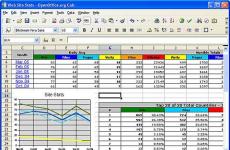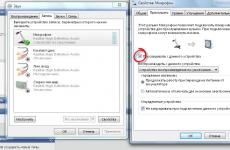How a board cube is measured. How to calculate the cubic capacity of an unedged board. The volume of a rectangular product
When round timber is harvested, first of all they try to accurately calculate its cubic capacity.
Measurement is made at the top cut, where the diameter will be slightly smaller. When measuring trunks that have a cross-section different from a round one, they try to measure along the narrowest cross-section, passing through the center of the annual rings of wood.
This technique is used because it allows you to most accurately estimate how much edged lumber will be obtained from one log, which has the greatest value in woodworking. Obviously, they will be cut based on the diameter of the top cut.

For the same reason, the ridged part of the trunk, where the difference between the larger and smaller diameters of the cut is large, is preferred to be discarded and not used in the workpiece. All the same, the sawmill will accept the wood at the upper cut.
When determining the length, measurements are made with an accuracy of 10 cm, while the length is rounded down. This accuracy is due to the fact that when felling logs, usually two cuts are made - one higher, the other lower. First, they make the lower one, then the upper one - on the other side. falls in the direction where the top of his head is leaning. The cuts are made so that the lower one is on the side where the trunk should fall.
In this case, the upper cut is made on the other side, standing in the opposite direction to the most likely fall. During the subsequent sawing of the whip, they usually cut with a saw for one cut, however, a cut error is often allowed - it can go a little obliquely, because of this, such a large error.
Calculation by cubature
In accordance with it, you can determine the volume of each log by making measurements and choosing the value from the table. In the table, the diameter of the barrel goes with a step of 1-2 cm, and along the length there is a step of 10 cm. Of course, it is not very convenient to use the entire cubature table.
This table provides data for the most common topsum diameters and lengths. Usually it is required to calculate the volume for logs up to 6 meters long. It is logs of this length that fit into most standard bodies of ordinary ones, not specialized as timber trucks or timber trailers for tractors, it is precisely in the size of up to 6 meters that logs are cut.
Naturally, when the timber is handed over to the sawmill, we are not talking about any "approximate" calculations, and it is necessary to apply the full GOST in the final calculation - after all, these are sawmills and the money of foresters who love accurate counting.
Formula calculation

V = πd²l / 4, where d is the trunk diameter in the upper cut, l is the length of the log, π = 3.14 - for our calculations, greater accuracy of this constant is not needed.
This is convenient when there is no GOST at hand, but only. With large volumes of work, even from three or four machines, it will take a lot of time to calculate in this way, in addition, this technique is not standardized and is not an argument in financial disputes.
Read also:
-
 A sawmill from a chainsaw with your own hands will help you decide ...
A sawmill from a chainsaw with your own hands will help you decide ... -

-
 How to calculate the square of the roof: calculation rules, ...
How to calculate the square of the roof: calculation rules, ...
There are dozens of professions in the world related to wood, and specialists must be able not only to correctly select and process wood, but also to calculate everything. Every specialist should know how to calculate the cubic capacity of a board, because this step is basic before starting construction.
The main stage of work
It is a little more difficult to calculate than edged one, due to the fact that it has not 3 indicators, but 4. Sellers often try to provide their own cubes, where incorrect data are specially indicated, so everything must always be recounted.
The volume of any lumber is calculated according to the standard school formula - V = abc, where a - width, b - height, c - length. Thus, let the edged board have parameters 50x150x6000 mm, which are converted into meters, it turns out 0.05x0.15x6 = 0.045 m³ Everything is extremely simple and understandable.

But with an unedged board, everything is a little more complicated, tk. the width of the bottom and top is different. Using a tape measure, measurements are made of the width of the board from below and from above, after which the data is reduced to the arithmetic mean. Thus, the volume formula will look like: V = (a1 + a2) / 2bc, where a1 is the width of the lower edge, a2 is the width of the upper edge, b is the height and c is the length. In practice, let the top edge (narrow) be 150 mm and the bottom 180 mm, height 50 and length 6000 mm, i.e. V = (0.15 + 0.18) / 2x0.05x6 = 0.0495 m³. It is this data that will be used further for all calculations.
This data can already be used to calculate the amount of lumber per m³. This requires 1 / 0.0495 = 20 pcs. Everything that remains after the decimal point must be rounded to get an integer. The volume of lumber is calculated individually each time so that errors can be avoided.
An error is often revealed when the wide side is taken as a basis, and the narrow one is not taken into account, which gives a small visible error for the client (1-2 pieces per 1 m³), but the seller wins a significant profit. If 1 board remains from 1 m³, then from every 19 m³ there is still 1 m³, which already brings superprofits. And taking into account the required volume of material, even for 1 house, these 5% pay off very seriously.
For example, a simple table will be given, where the widths are 150 and 180, and only the length and height differ:
Summarizing
By themselves, the calculations are simple, tk. are carried out according to the formulas studied at school. But during the process, it is very important to approach the process with the utmost meticulousness in order to avoid mistakes.
Only initially the process may seem complicated, but after 5-10 approaches everything will seem easier.
The calculation of the cubic capacity of the boards will depend on whether it is edged (including planed) it is a board, or unedged. In the first case, it is easier to calculate the cubic capacity, since the lumber has a regular geometric parallelepiped shape. The cubic capacity of an unedged board - one whose sides are unworked, fast - is calculated a little differently.
Fortunately, it is not difficult to calculate the cubic capacity of the board. Either will help you with this. table "How many boards in a cube", or a formula. The last option is safer and more accurate.
Calculation of the cubic capacity of edged boards
How many boards in a cube (table)
From this table you can find out the answers to such popular questions: how to calculate the cubic capacity of boards, how many boards are in a cube, how many square meters of boards are in a cube, how many cubes are in one board by the most popular sizes.
Edged board
The cubic capacity of the board edged with a thickness of 50 millimeters
| Size (mm) | m 2 in 1 m 3 | Pieces of boards in 1 m 3 | |
| 100*6000 | 20 | 33 | 0,03 |
| 120*6000 | 27 | 0,036 | |
| 150*6000 | 22 | 0,045 | |
| 180*6000 | 18 | 0,054 | |
| 200*6000 | 16 | 0,06 | |
| 250*6000 | 13 | 0,075 |
The cubic capacity of the edged board with a thickness of 40 millimeters
| Size (mm) | m 2 in 1 m 3 | Pieces of boards in 1 m 3 | The volume of one board (in "cubes") |
| 100*6000 | 25 | 41 | 0,024 |
| 120*6000 | 34 | 0,0288 | |
| 150*6000 | 27 | 0,036 | |
| 180*6000 | 23 | 0,0432 | |
| 200*6000 | 20 | 0,048 | |
| 250*6000 | 16 | 0,06 |
Cubic capacity of edged board 32 mm thick
| Size (mm) | m 2 in 1 m 3 | Pieces of boards in 1 m 3 | The volume of one board (in "cubes") |
| 100*6000 | 31 | 52 | 0,0192 |
| 120*6000 | 43 | 0,023 | |
| 150*6000 | 34 | 0,0288 | |
| 180*6000 | 28 | 0,0346 | |
| 200*6000 | 26 | 0,0384 | |
| 250*6000 | 20 | 0,048 |
The cubic capacity of the board edged with a thickness of 30 millimeters
| Size (mm) | m 2 in 1 m 3 | Pieces of boards in 1 m 3 | The volume of one board (in "cubes") |
| 100*6000 | 33 | 55 | 0,018 |
| 120*6000 | 46 | 0,0216 | |
| 150*6000 | 37 | 0,027 | |
| 180*6000 | 30 | 0,0324 | |
| 200*6000 | 27 | 0,036 | |
| 250*6000 | 22 | 0,045 |
The cubic capacity of the board edged with a thickness of 25 millimeters
| Size (mm) | m 2 in 1 m 3 | Pieces of boards in 1 m 3 | The volume of one board (in "cubes") |
| 100*6000 | 40 | 67 | 0,015 |
| 120*6000 | 55 | 0,018 | |
| 150*6000 | 44 | 0,0225 | |
| 180*6000 | 37 | 0,027 | |
| 200*6000 | 33 | 0,03 | |
| 250*6000 | 26 | 0,0375 |
The cubic capacity of the board edged with a thickness of 20 millimeters
| Size (mm) | m 2 in 1 m 3 | Pieces of boards in 1 m 3 | The volume of one board (in "cubes") |
| 100*6000 | 50 | 83 | 0,012 |
| 120*6000 | 69 | 0,0144 | |
| 150*6000 | 55 | 0,018 | |
| 180*6000 | 46 | 0,0216 | |
| 200*6000 | 41 | 0,024 | |
| 250*6000 | 33 | 0,03 |
where a is the thickness of the board
b - its width
l - its length
Cubature of the board calculated in cubic meters, therefore, before calculating the cubic capacity of the board, all values are converted from millimeters to meters. For example, let's take a 40 * 200 * 6000 board "forty": its thickness is 40 mm (0.04 m), its width is 200 mm (0.02 m), and its length is 6000 mm (6 m). Now we calculate the cubic capacity of the boards:
0.04 * 0.2 * 6 = 0.048 m 3
That is, one board "forty" 100 * 6000 has a cubic capacity of 0.048 m 3. To determine, how many boards in a cube That is, it remains only to divide 1 by the amount received:
1 / 0.048 = 21 boards in 1 m 3.
Calculation of the cubic capacity of unedged boards
An unedged board differs from an edged board in that it is not processed on the sides, that is, one side has an irregular shape, and it is impossible to indicate the exact width of the unedged board. This is the reason for the difficulties in calculating the cubic capacity of an unedged board, which are easier to explain with a specific example.

Unedged board
Suppose you need to sheathe a rectangular structure 5 * 7 meters in size and 4 meters in height with an unedged board. Your board is 50 millimeters thick (0.05 m).
To begin with, calculates the finishing area. To do this (remember the school), we multiply the perimeter of the building (two sides by 5, two sides by 7 - in total 24 meters) by a height of 4 meters. We get 96 m 2.
Now we multiply the area by the thickness of the material: 96 * 0.05 = 4.8 m 3
It turns out that for cladding, the width of each cladding element has practically no effect on the total cubic capacity. There are no exact tables of cubic capacity for unedged boards, and there cannot be, since it is not known from which part of the log the board was cut, and what is its thickness on both sides, but it is possible to give some averaged data on the cubic capacity of the unedged board:
Calculating the cubic capacity of boards: what you need to remember
All board manufacturers round the numbers in the direction that is beneficial to them. An error occurs. In general, not large, but when it comes to hundreds of cubes or the lack of boards for sheathing, the question becomes an edge. For example, the volume of one board is 0.018 m 3, and the manufacturer has rounded this figure to 0.02 m 3. As a result, instead of the expected 55 boards, you will receive only 50. Therefore, always check with the sellers for this information.
We hope our article shed light on the questions about how many boards are in a cube, how to calculate the cubic capacity of a board, how many boards are in a cube, and how not to get into a mess when buying lumber.
Content:
The seller and the buyer of timber pursue their own interests. In such a rather delicate matter, one must have certain - simple - knowledge. Everyone has a tool today: a calculator in your phone.
What is a cubic meter of edged board
How many edged boards in one cube - Photo
Edged board- lumber with clean cut edges, no bark residues. The width of the edged board is at least twice the thickness.
Since the fee is charged for the volume in cubic meters, we recall the geometric formula for its determination:
W * H * D = volume.
Everything is counted in meters
To find out how many boards are in one cube:
1 / (W * H * D) = number of boards in 1m3 (cube)
where, NS- Width, V- Height, D- Length
Translation: 1mm = 0.001m, 10mm = 0.01m, 100mm = 0.1m
Below is a table of some types of edged boards and their volume
|
Board dimensions |
Volume of one board | Planks in 1m3 (cube) |
|
20 × 100 × 6000 |
0.012 m³ |
83 Item (s) |
|
20 × 120 × 6000 |
0.0144 m³ |
69 pcs. |
|
20 × 150 × 6000 |
0.018 m³ |
55 pcs. |
|
20 × 180 × 6000 |
0.0216 m³ |
46 pcs. |
|
20 × 200 × 6000 |
0.024 m³ |
41 Item (s) |
|
20 × 250 × 6000 |
0.03 m³ |
33 pcs. |
|
25 × 100 × 6000 |
0.015 m³ |
67 pcs. |
|
25 × 120 × 6000 |
0.018 m³ |
55 pcs. |
|
25 × 150 × 6000 |
0.0225 m³ |
44 pcs. |
|
25 × 180 × 6000 |
0.027 m³ |
37 pcs. |
|
25 × 200 × 6000 |
0.03 m³ |
33 pcs. |
|
25 × 250 × 6000 |
0.0375 m³ |
26 pcs. |
|
30 × 100 × 6000 |
0.018 m³ |
55 pcs. |
|
30 × 120 × 6000 |
0.0216 m³ |
46 pcs. |
|
30 × 150 × 6000 |
0.027 m³ |
37 pcs. |
|
30 × 180 × 6000 |
0.0324 m³ |
30 pcs. |
|
30 × 200 × 6000 |
0.036 m³ |
27 pcs. |
|
30 × 250 × 6000 |
0.045 m³ |
22 pcs. |
|
32 × 100 × 6000 |
0.0192 m³ |
52 Item (s) |
|
32 × 120 × 6000 |
0.023 m³ |
43 Item (s) |
|
32 × 150 × 6000 |
0.0288 m³ |
34 pcs. |
|
32 × 180 × 6000 |
0.0346 m³ |
28 pcs. |
|
32 × 200 × 6000 |
0.0384 m³ |
26 pcs. |
|
32 × 250 × 6000 |
0.048 m³ |
20 pcs. |
|
40 × 100 × 6000 |
0.024 m³ |
41 Item (s) |
|
40 × 120 × 6000 |
0.0288 m³ |
34 pcs. |
|
40 × 150 × 6000 |
0.036 m³ |
27 pcs. |
|
40 × 180 × 6000 |
0.0432 m³ |
23 pcs. |
|
40 × 200 × 6000 |
0.048 m³ |
20 pcs. |
|
40 × 250 × 6000 |
0.06 m³ |
16 pcs. |
|
50 × 100 × 6000 |
0.03 m³ |
33 pcs. |
|
50 × 120 × 6000 |
0.036 m³ |
27 pcs. |
|
50 × 150 × 6000 |
0.045 m³ |
22 pcs. |
|
50 × 180 × 6000 |
0.054 m³ |
18 pcs. |
|
50 × 200 × 6000 |
0.06 m³ |
16 pcs. |
|
50 × 250 × 6000 |
0.075 m³ |
13 pcs. |
When buying lumber in small quantities, you can get confused with the decimal places, namely rounding. An experienced seller will round the resulting number to 3 decimal places. Experienced shopper will round on GOST y - up to 0.000001 cubic meters and will remind the seller that up to 0.001 cubic meters. meters round only a batch of boards... The most common quantity - from a few boards to 2-4 cubic meters - does not constitute a batch. In order not to offend either one or the other, round up to 4 decimal places.
Then the resulting volume is multiplied by the cost of 1 m3 (cube). And this is where the number of decimal places can have a significant impact on costs.
1 edged board 32 mm thick, 200 mm wide and 6 m long(32Х200Х6000) has volume
- 0.032 * 0.2 * 6 = 0.0384 cubes
30 boards will have a volume
- 0.0384 * 30 = 1.152 cubes
If the seller rounds the volume of 1 board to 0.04 cubic meters, then he will additionally receive income:
- 0.04 * 30 = 1.2 cubes
- 1.2 - 1.152 = 0.048 cube
Selling these 0.048 "air" cubes makes the buyer's wallet easier
The cost may vary depending on the type of wood. The grade decreases with decreasing quality: the presence of wood defects and deviation from standard sizes. If the floorboard has a curvature, narrower or thinner than the standard by 3-5 mm, it will not go completely into the business. Visual inspection of the lumber is just as important as accurate determination of the volume.
Covered area of the edged board
To find out how much lumber you need, the calculation of a board in a cube will help you. The above formula is based on the definition of area
W * L = area.
Having calculated the covered area, it remains to multiply it by the desired thickness of the board
W * D * 0.022; 0.025; 0.032; 0.04 m and so on.
It remains to see how many boards are in one cube, and determine the required number. Just in case, print or remember the table above.
You also need to take into account the future cutting of the material.The flooring and cladding board "lining" have an overlapping tongue, which is taken into account in the cubic capacity, but is not included in the covered area. A couple of boards are needed have in reserve .
Determination of the volume of unedged boards

How many unedged boards are in one cubic meter - Photo
Unedged board, that is, it does not have a rectangular cross-section along its entire length, is significantly cheaper and is widely used for the construction of various kinds of rough lathing, temporary fences.
It is important to understand that the top and bottom of such a board must be sawn through the entire length. If one face is not cut through, then this is already croaker... The definition of the cubic capacity of such lumber is distinguished precisely by the fact that it does not have the correct geometric shape.
The current standards establish several methods for accounting for unedged material, and it is practically impossible to calculate exactly how many boards are in 1 cube.
- Batch.
- Piece by piece.
- Sampling method.
In batch In case, the boards are tightly packed into a bag of the correct shape with further measurement. Further calculation is carried out according to the standard formula for determining the volume. Using different ratios.
Measurement by piece is made according to the average measurements of height and width. The largest and smallest dimensions in meters are folded and halved.
(Шmax + Шmin) / 2 * (Bmax + Bmin) / 2 * D = volume, m3
where, NS- Width, V- Height, D- Length
If it is visually visible that the wood is fresh and, accordingly, damp (moisture content above 20%), then the seller is obliged to reduce the total volume by multiplying the resulting cubic capacity by the coefficient:
- 0,96 for conifers
- 0,95 for deciduous.
Sampling method used to determine the volume of a large batch of unedged sawn timber. When loading, for example, into the body of a vehicle, every fifth, tenth or twentieth board is measured according to the second method.
The resulting volume is multiplied by five, ten, twenty. The download continues until the next control board. It is also practiced to select control boards in a separate stack. The calculation is made after the completion of loading.
Calculation of the volume of a bar: how many bars are in a cube?

Calculation of the number of timber in one cube - Photo
A timber differs from an edged board only in that all its edges or two opposite ones have the same size: more than 0.05 m in thickness and 0.013 m in width. The formula for determining its volume is standard
|
R bar size |
The volume of one bar |
Beams in 1m3 (cube) |
|
100 × 100 × 6000 |
0.06 m³ |
16 pcs. |
|
100 × 150 × 6000 |
0.09 m³ |
11 pcs. |
|
150 × 150 × 6000 |
0.135 m³ |
7 pcs. |
|
100 × 180 × 6000 |
0.108 m³ |
9 pcs. |
|
150 × 180 × 6000 |
0.162 m³ |
6 pcs. |
|
180 × 180 × 6000 |
0.1944 m³ |
5 pieces. |
|
100 × 200 × 6000 |
0.12 m³ |
8 pcs. |
|
150 × 200 × 6000 |
0.18 m³ |
5.5 pcs. |
|
180 × 200 × 6000 |
0.216 m³ |
4.5 pcs. |
|
200 × 200 × 6000 |
0.24 m³ |
4 things. |
|
250 × 200 × 6000 |
0.3 m³ |
3 pcs. |
W * T * D = timber volume, m3.
To find out how much timber is in one cube
1 / (W * T * L) = the amount of timber in 1 m3 (cube)
where, NS- Width, T- thickness, D- Length
Translation: 1mm = 0.001m, 10mm = 0.01m, 100mm = 0.1m
When buying a timber, the volume must be determined by the piece, since the timber is laid with gaskets in the stack. Measuring such a stack and calculating the cubic capacity according to the above formula invariably lead to a significant overestimation of the volume.
Length of 1 cube of timber (and any edged lumber) in meters is determined by dividing the unit by thickness and width. For example, you need to find out how many timber is in one cube - the edge is 180 mm.
1 / (0.18 * 0.18) = 30 meters 87 cm.
1 meter of such a bar will have the following volume.
0.18 * 0.18 * 1 = 0.0324 m3.
These calculations may be needed when determining the cost of funds and material.
Construction log volume: how many logs are in one cube?

How many logs are in one cube: calculation - Photo
Log structures are and will be relevant. The definition of the volume of round material depends on the method of obtaining it.
- Hand debarking construction log.
- Construction log, rounded on special machines.
The section of the trunk for cutting by hand has the shape of a slightly truncated cone, therefore the cylinder volume formula is applied, but with some peculiarities.
3.14 * r 2 * L = log volume, m3
Here
r is the average radius, calculated as (r 1 + r 2) / 2, r 1 is the radius from one end of the log, r 2 is the radius from the other end of the log.
L- the length of the log.
3,14
- constant "Pi".
A rounded log has, of course, a cylindrical shape and is calculated using the above formula. But here the radius is measured at any end once. Determination of the number of logs in 1 cube is determined similarly to a bar.
1 / (3.14 * r 2 * L) = Number of logs in 1m3 (cube)
Blanks for construction logs are measured in the same way.
The radius (diameter halved) is measured without taking into account the thickness of the bark. In practice, manual calculations are not performed. They use special tables, compiled into a cubature book. They are also available in electronic form.
In conclusion, it should be noted that lumber for critical work, standard in size, wood species and moisture content, should be purchased at large sites. A small manufacturer, as a rule, is not allowed there due to the lack of appropriate control over the quality of products.
When starting the construction or repair of a wooden house, you have to purchase various boards, while the buyer knows the total length, but the seller releases the lumber by volume. This article will help you to correctly determine the number of any boards in one cubic meter, which will avoid purchasing too much lumber.
How to calculate the volume of edged boards
Determining the volume of one board is done in the same way that was used at school - by multiplying the length by width and thickness. Or by multiplying width by length and thickness. It doesn't matter in what order you multiply the board sizes, the result will always be the same. For example, a standard "fifty" board has the following dimensions:
- length 6 meters;
- width 20 centimeters;
- thickness 5 centimeters.
To facilitate multiplication, it is necessary to bring all dimensions to common units - meters or centimeters. It is easier to carry out these calculations in meters, then you will not have to divide the resulting number by a million to convert it to cubic meters.
- As a result of multiplication, we get the volume of one board 0.06 cubic meters.
- After that, we divide the unit by 0.06 and we get the number of boards in one cubic meter.
- We get the number 16.6666, which must be rounded to the nearest whole, that is, up to 16, which will be the number of "fifty" boards in one cubic meter. It is always necessary to round down, because some of the boards may turn out to be slightly wider or thicker, they may be loosely laid, or several boards from the package will be twisted. If all the boards turn out to be normal, then fractions can also be taken into account, this is especially true for a thick bar.

Table of standard values of volumes
For your convenience, we have created a table with the most common sizes of boards and beams, as well as their number in one cubic meter.
|
Size in millimeters |
The volume of one board is cubic meters. |
Number of boards in one cubic meter |






